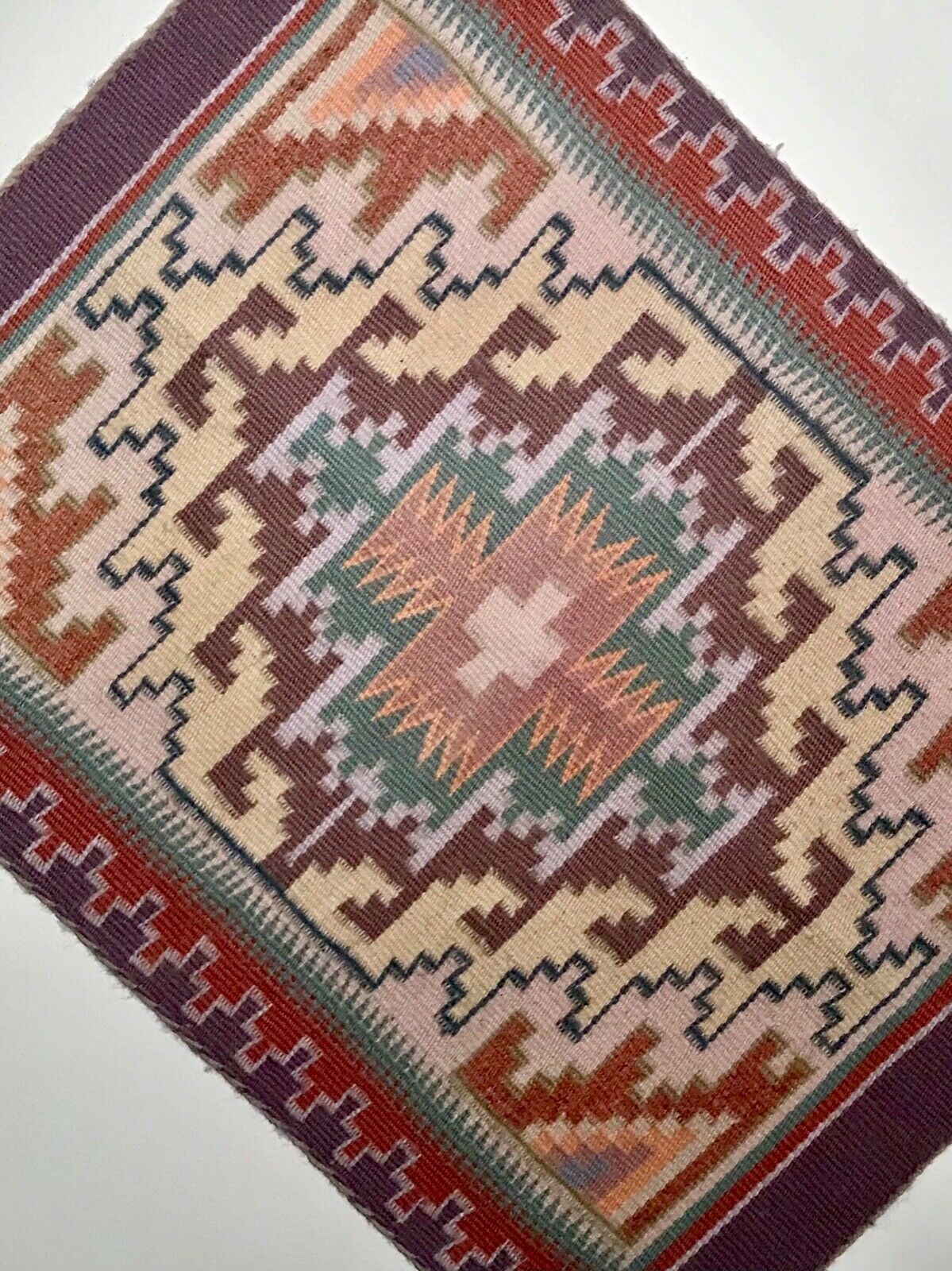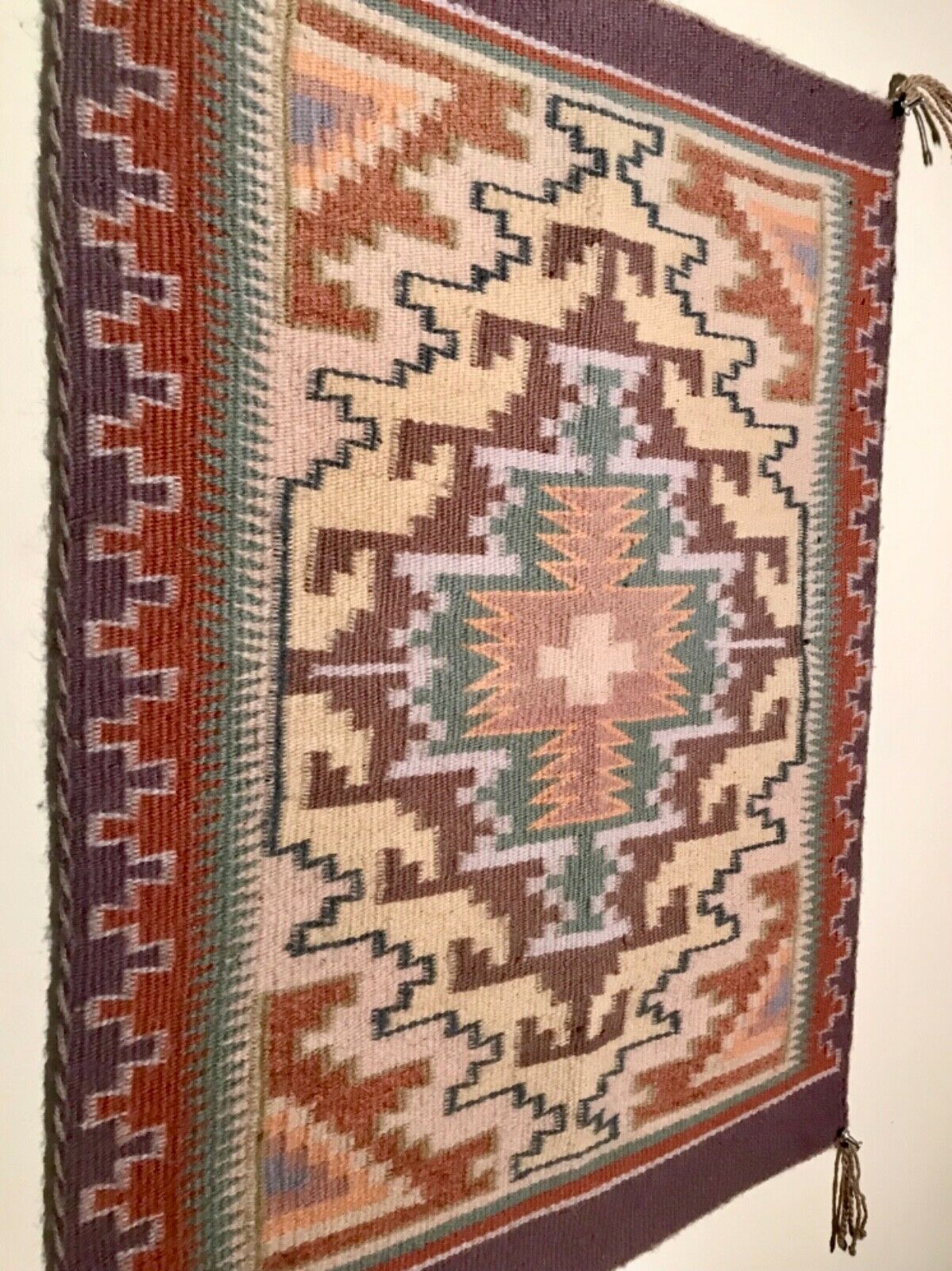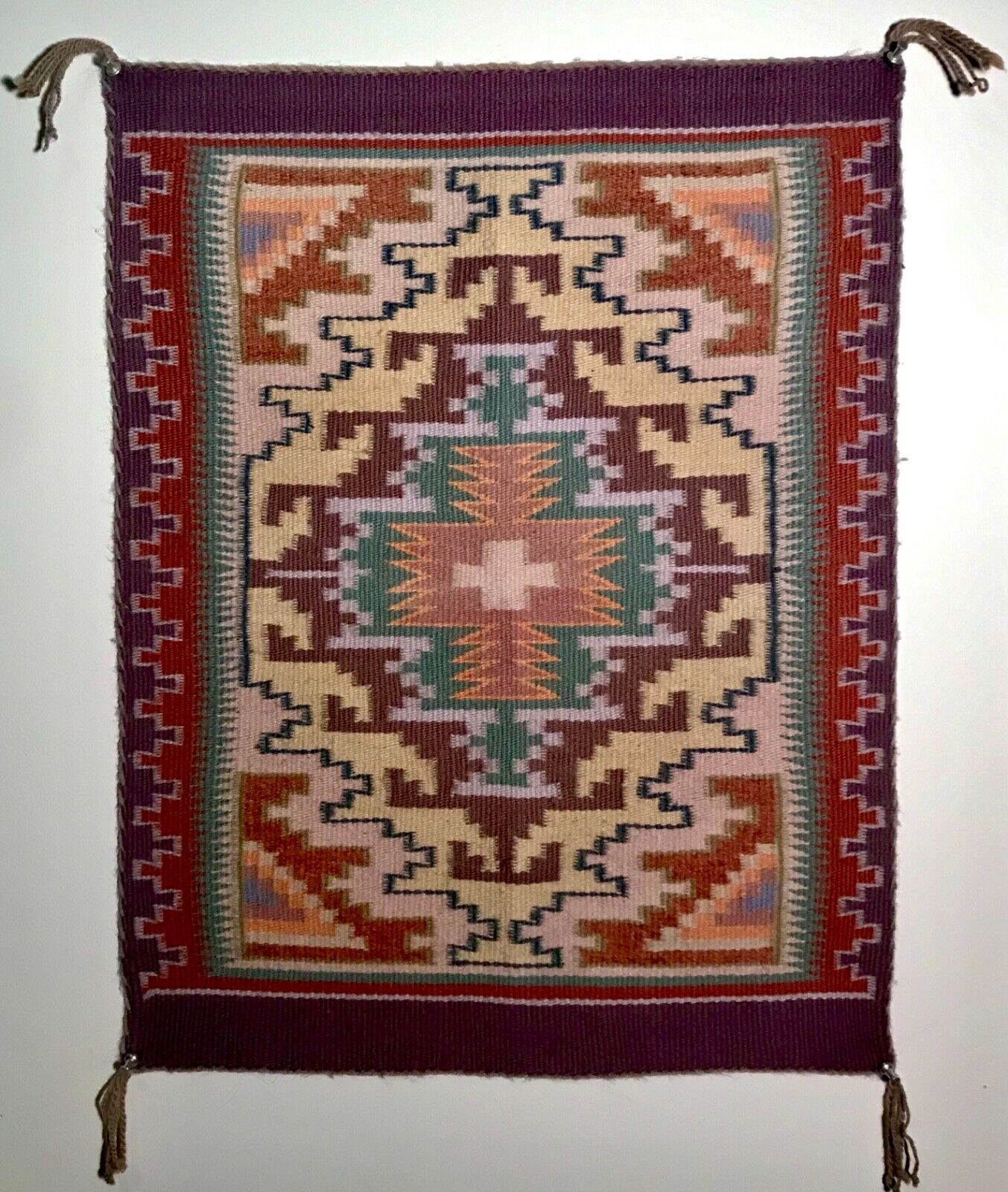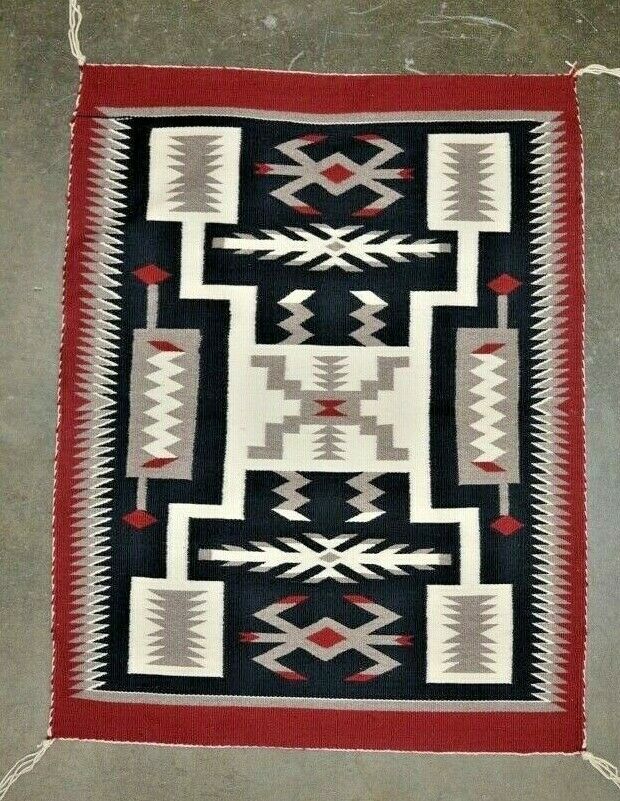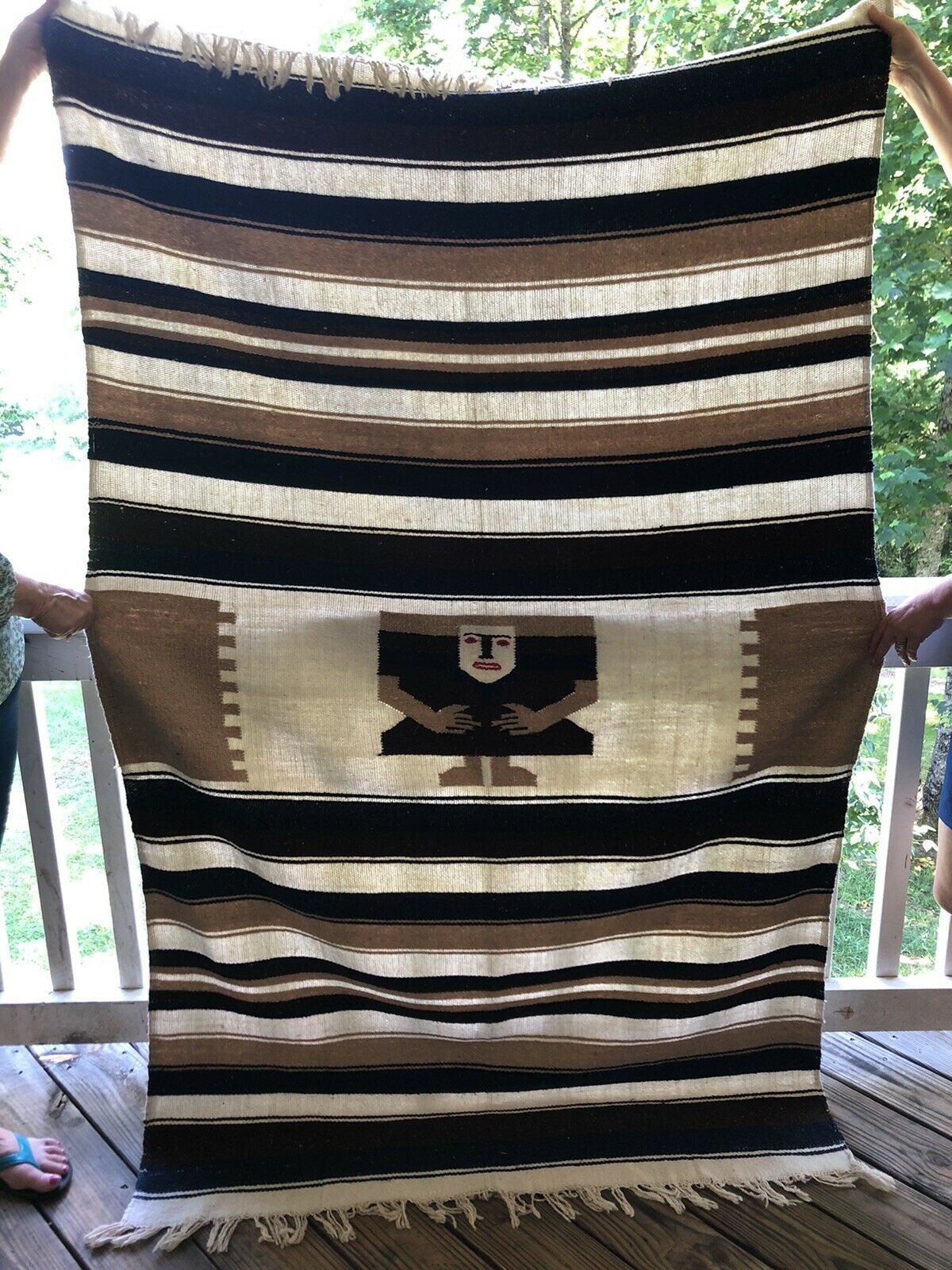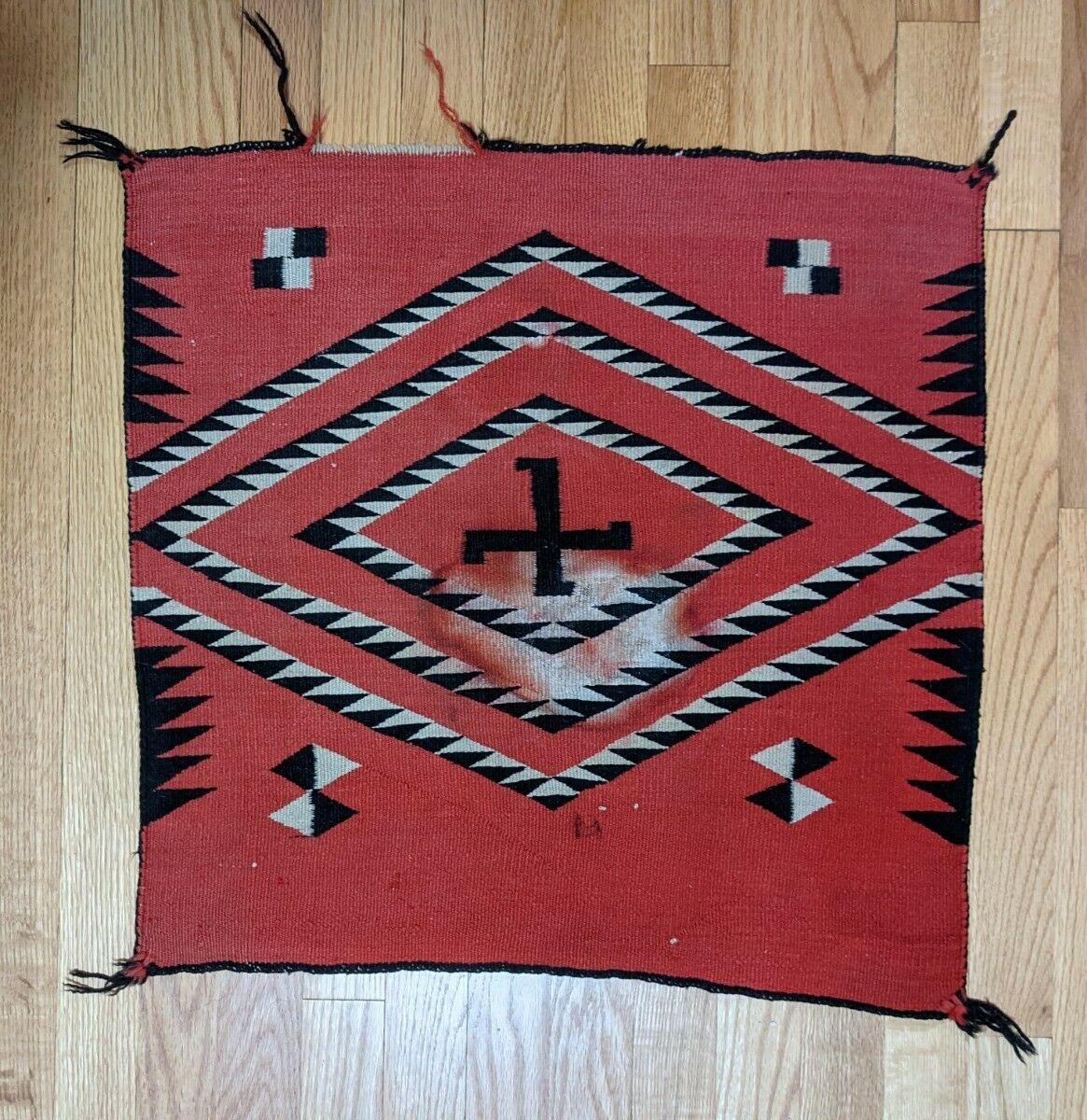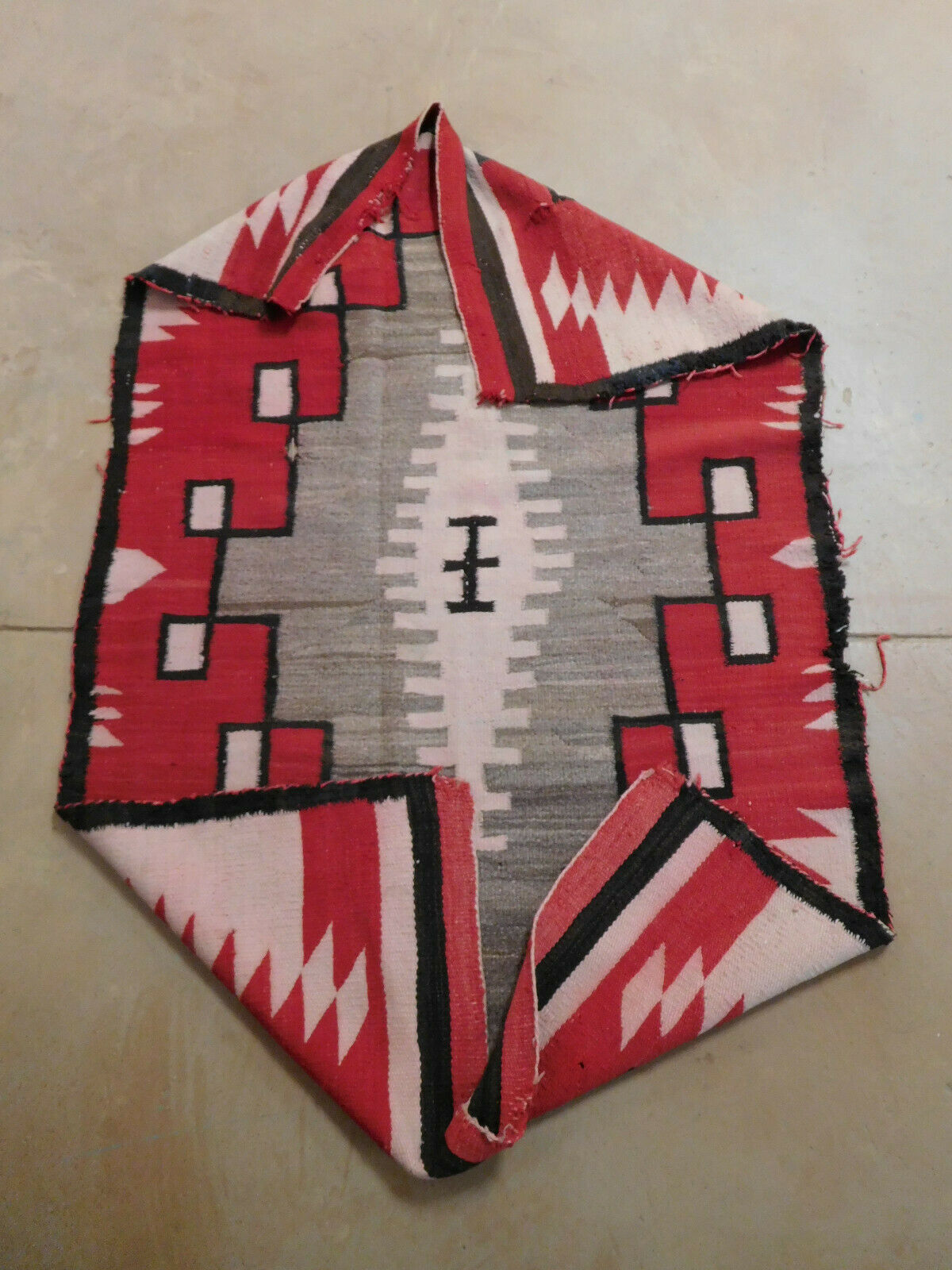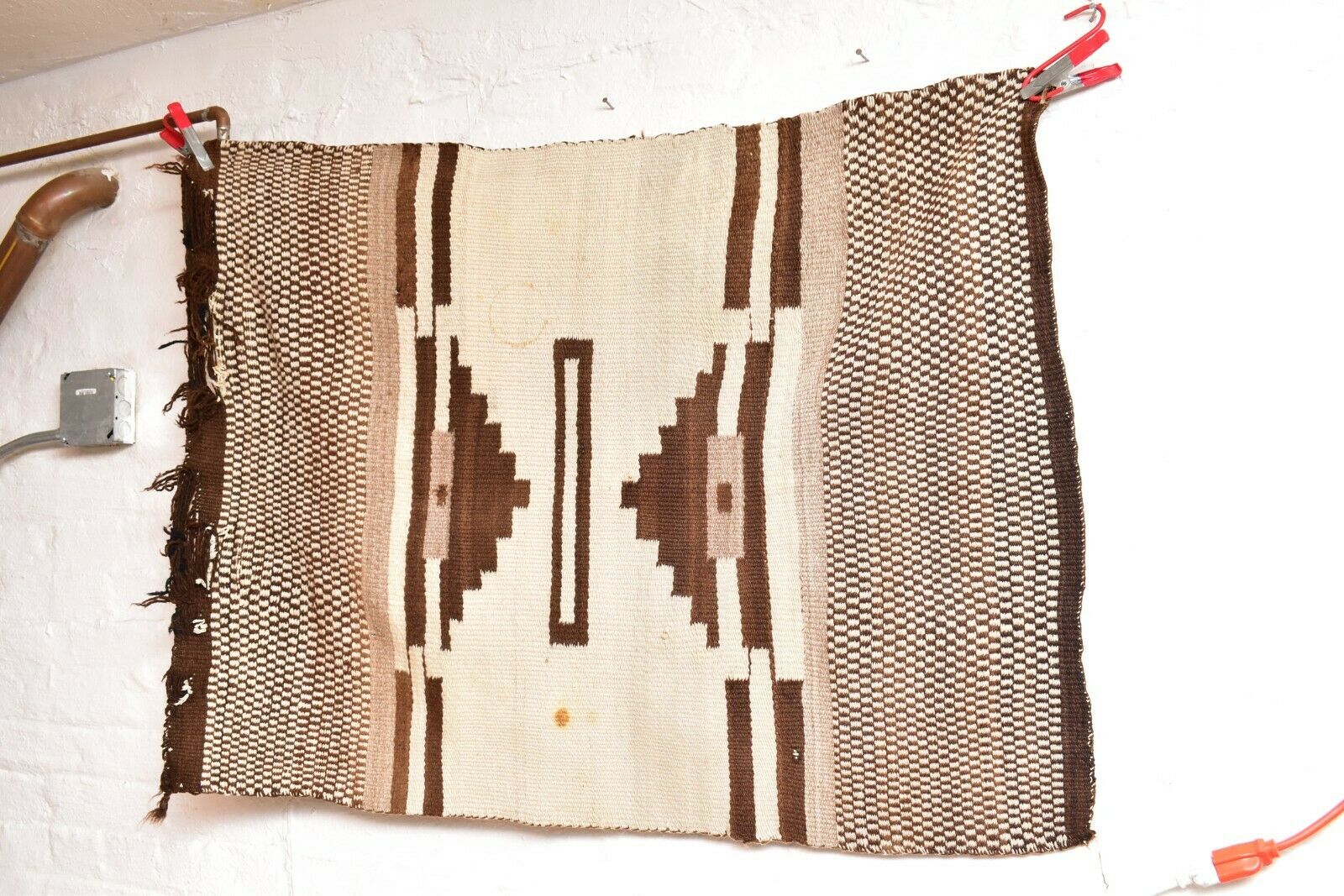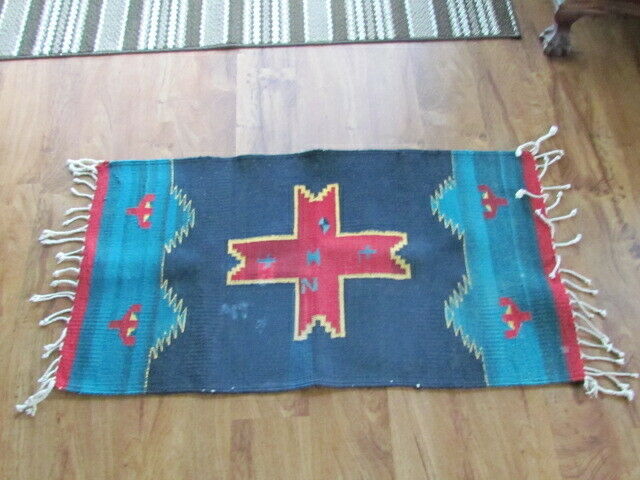-40%
NAVAJO BURNTWATER TAPESTRY / RUG, SPECTACULAR VEGETAL COLORATION, MINT, C1970,NR
$ 13.2
- Description
- Size Guide
Description
NAVAJO BURNTWATER TAPESTRY / RUG, SPECTACULAR VEGETAL COLORATION, EXCELLENT, C1970, NRThese Burntwater region designs are masterfully executed. This one has a neat Cross at the center surrounded by an elaborate stepped “cloud” design scheme. The phenomenal pastel vegetal coloration mimics the hues found in the 4 Corners region of the Southwest.
“The Navajo rug design known as Burntwater was developed by Bruce Burnham and Don Jacobs
at the Burntwater Trading Post near Sanders, AZ. These traders encouraged their local weavers to
create very fine weavings using the Central Diamond and Four Sacred Mountain design introduced
from Oriental rugs to the Navajo by traders at the turn of the century in an attempt save the art of
Navajo weaving by opening Eastern markets in the United States. Navajo Burntwater rugs are
known for their beautiful pastel colours derived from Native vegetal dyes and also for their
excellence in weave. Burntwater rugs are a more recent development of the late 1960’s but
exemplify the role the Trader still plays in encouraging local weavers. Mr. Burnham continues to
work with his weavers in encouraging new designs and is largely responsible for the “New Germantown”
Navajo rugs using contemporary yarns from Germantown, PA and old 1880 Germantown rug designs
to inspire the talented Navajo weavers of the Burntwater area.”
Beautiful size for display measuring approximately 20” x 26”. Circa 20th C. Pristine condition. Fresh to the market.
This is a 7 day NO RESERVE auction with a minimal starting bid to get things rolling. Everything guaranteed as stated. Shipping includes insurance.
IN
an effort to assist Buyers with understanding the way I describe the condition of Navajo weavings that I’m selling on ebay, I spoke with Navajo textile author and expert Tyrone Campbell about his ‘Classification Categories for Condition’ that he first published in his NEWSLETTER in 1981.
After discussing with him that we may have to tweak it a bit because its been 40 years since it was originally comprised and has gotten nearly impossible to find weavings in excellent, let alone mint condition these days, I concluded, what the hell, why mess with a good thing. It’s a standard worth sticking to! So here it is as originally written (and with permission to reprint from Tyrone, July 2020).
+++++++++++++++++++++++++++++++++++++++++++++++++++++++++++++++++++++++++++++++++++++++++++++++++
“CLASSIFICATION
CATEGORIES
FOR DETERMINING PHYSICAL CONDITION
FRAGMENT: Any portion of an entire weaving.
DETERIORATED: Heavily damaged, warps exposed, selvage missing, large holes, serious fading or running, corners or areas missing.
AVERAGE: Shows floor wear or small holes, some selvage damage, very minor bleeding, etc.
GOOD: Above average classification may still show use, but not broken warps. In some cases a very small hole or two or a minor selvage break or two is acceptable.
EXCELLENT: No holes, no bleeding or fading, no exposed warps or serious selvage damage.
MINT: This classification means that the textile is in pristine condition.
NOTE: In the case of rare weavings we will up-grade the condition classification from Average to Good or from Good to Excellent, but in no case to Mint or from Deteriorated to Average condition.”
From THE TYRONE D. CAMPBELL NEWSLETTER, Published at Albuquerque, N.M., 1981.
++++++++++++++++++++++++++++++++++++++++++++++++++++++++++++++++++++++++++++++++++++++++++++++++

